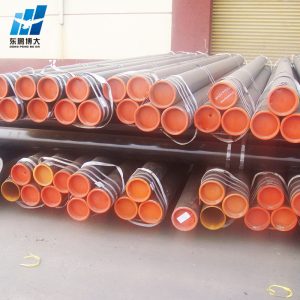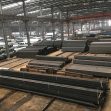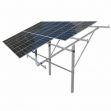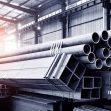Carbon capture and storage technologies
In the pursuit of environmental sustainability, steel pipe manufacturers are increasingly turning to carbon capture and storage (CCS) technologies to mitigate the carbon emissions associated with their production processes. CCS technologies provide a viable solution for capturing carbon dioxide (CO2) emissions and preventing them from being released into the atmosphere. By implementing CCS, steel pipe supplier can significantly reduce their carbon footprint and contribute to global efforts in combating climate change. Here is more information on the CCS technologies used in steel pipe production.

Capture Technologies:
Post-Combustion Capture: This method involves capturing CO2 from flue gases after combustion. In steel pipe production, post-combustion capture can be applied to capture CO2 emissions released during the heating and treatment processes. Absorption technologies, such as amine-based systems, are commonly used to capture CO2 from the flue gases.
Pre-Combustion Capture: Pre-combustion capture involves converting fossil fuels into a mixture of hydrogen and CO2 before combustion. The hydrogen can be used as a cleaner fuel in the welded steel pipe production process, while the captured CO2 can be stored or utilized in other applications.
Oxyfuel Combustion: Oxyfuel combustion utilizes pure oxygen instead of air during the combustion process, resulting in a flue gas consisting mainly of CO2 and water vapor. The CO2 can be easily separated and captured, while the water vapor can be condensed and reused in the production process of round steel pipe.
Transportation:
Once the CO2 is captured, it needs to be transported to storage sites. The transportation methods typically involve pipelines, trucks, ships, or a combination of these. Pipelines are often the preferred choice for long-distance transport due to their efficiency and capacity to handle large volumes of CO2.
Storage:
Geological Storage: The most common method of CO2 storage is geological storage, which involves injecting the captured CO2 deep underground into suitable geological formations. Depleted oil and gas fields, saline aquifers, and deep coal seams are potential storage sites. The CO2 is stored securely in these formations, preventing its release into the atmosphere.
Enhanced Oil Recovery (EOR): In some cases, CO2 captured from rectangular hollow section production can be utilized for enhanced oil recovery. The CO2 is injected into oil reservoirs, helping to extract additional oil while simultaneously storing the CO2 underground.
It is important to note that the implementation of CCS technologies in steel pipe production requires careful planning, investment, and collaboration. Steel pipe manufacturers must conduct feasibility studies, assess the economic viability of CCS, and collaborate with stakeholders to ensure the successful integration of these technologies into their operations.
Tel: +86 18202256900 Email: steel@tjdpbd.com










